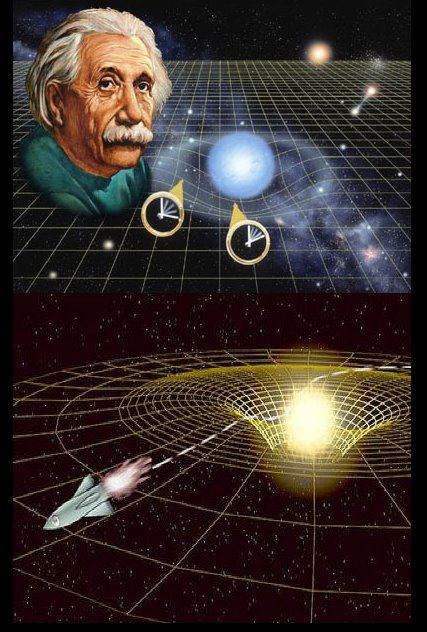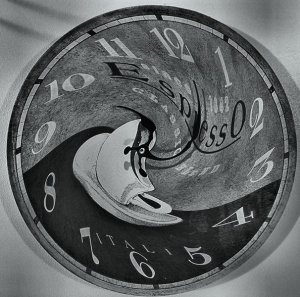

The crazy world of quantum mechanics can best be summed up by Niels Bohr’s famous quote: “For those who are not shocked when they first come across quantum theory, cannot possibly have understood it.” As utterly strange as the behavior of particles at the subatomic level can be, there are plenty of wonderfully bizarre observations we can make at the macroscopic level of the universe as well – many of which arise from the relativistic nature of reality that Einstein first described almost 100 years ago.
Consider the following thought experiment: You are about to hop onto a spaceship that can maintain a constant speed of 99% the speed of light (known in physics as c – around 186,282 miles per second/299,791 km/s). Prior to doing so, you set two identical digital clocks to the same date and time and say goodbye to your two-year-old son. One digital clock is left at the launch site; the other is taken with you on the ship. You zip around the solar system at around 186,000 miles per second/299,791 kms (let’s conveniently ignore the time it takes you to accelerate to that speed as well as any time spent slowing down) and arrive back at the launch site exactly 1 year later, according to your digital clock. To your amazement, the clock that was left at the launch site indicates that seven years have passed since you left. The welcome back hug you get from nine-year-old son only adds to the confusion.
You have experienced what physicists know as “relativistic time dilation.”
The explanation stems from one of Einstein’s most important discoveries – that the speed of light is constant for all observers in the universe, regardless of where they are. This idea might not seem too profound at first read, so let’s take a moment and consider the implications it has on our perception of reality.
If you are driving down the freeway at a constant speed of 60 mph (97 km/h) and another car passes you traveling at a constant speed of 70mph/120kmh, you would observe that car moving away from you at a relative speed of 10mph/16kmh (taking into account how fast you are going while observing it). A person standing on the side of the road watching you both go by would see the car traveling away a relative speed of 70mph/120kmh. This is a simple, logical example of how our perception of motion depends on our relative frame of reference.

Now we’ll consider the behavior of light and see things get a bit odd.
Going back to our hypothetical spaceships, let’s look at what happens when we measure the speed that light moves away from both a stationary observer and an observer traveling at nearly 186,000 miles per second. Not surprisingly, a person standing still and shining a laser into space will observe that light moving away at 186,282 miles per second/299,791 kms (or c if we are using the aforementioned physics symbol).
What about you and that spaceship moving at 99% of c?
If a laser is fired from the front of your ship, shouldn’t you observe it traveling away from you at a slower relative speed than the person on the ground did, as was the case with the cars on the freeway?
Despite moving at almost the speed of light yourself, you will still observe the light from the laser moving away from you at 186,282 miles per second. How can this be? How can your relative motion have no impact on the rate at which the emitted light is moving away from you?

The behavior of light described above has been experimentally verified numerous times and can only be explained by the fact that time itself must slow down for moving objects. While this time-dilation effect will only have dramatic impacts at speeds approaching c, it does suggest the theoretical possibility of time travel to the future – even if we are nowhere near being technologically capable of traveling at the speeds required. To put this into perspective, the Russian cosmonaut Sergei Avdeyev spent over 700 days in space at a velocity of around 17,000 miles per hour/27,300 kmh and aged only 20 milliseconds less than he would have on Earth. We’ve obviously got a long way to go before time-dilation affords us the possibility of checking out the distant future.
For Further Exploration:
If you’ve got a few minutes, check out the following video for an animated explanation of this phenomenon and Einstein’s relativistic model of the universe, as well as the effect that motion has on our perception of space – in addition to time dilation:
A great little 1.5 minute overview of the equation used to calculate the factor by which time will slow time at a given velocity:
WATCH: Time Dilation Explained in 10 Seconds
For related articles, learn how photons experience the passage of time, see how physicists recently simulated time travel, or discover NASA’s plans for the first warp-drive engine.